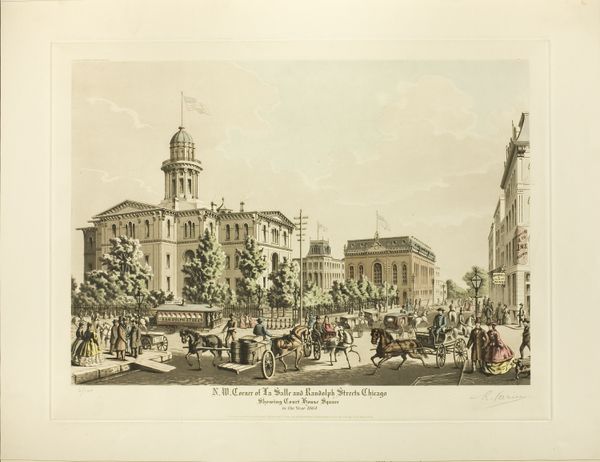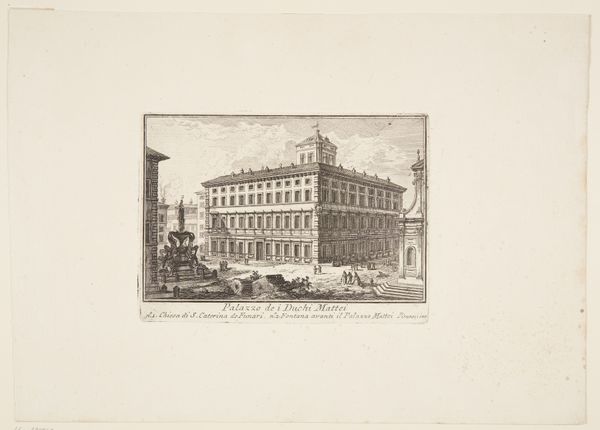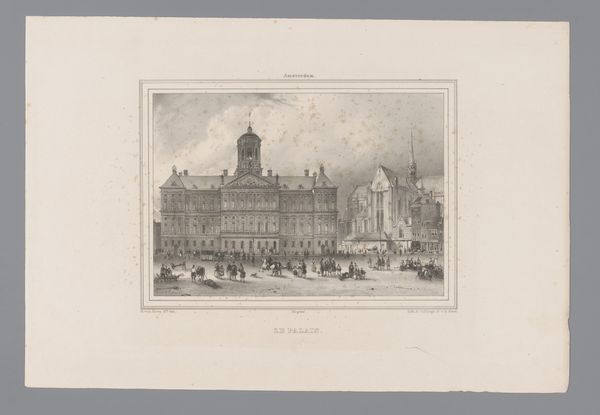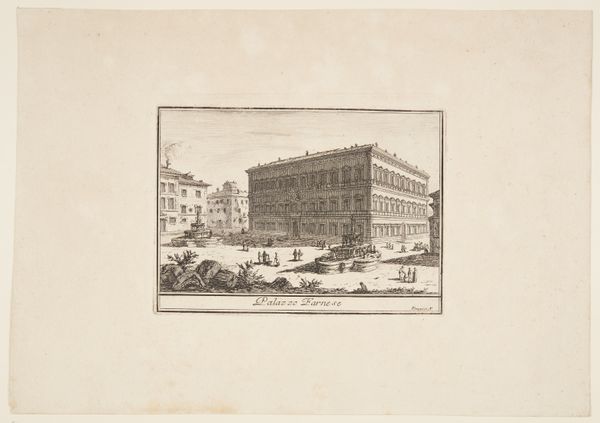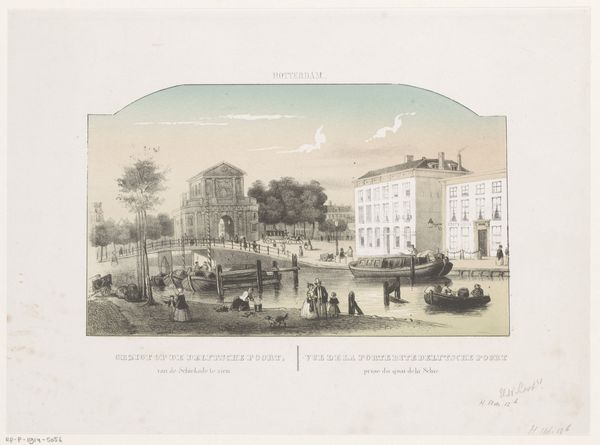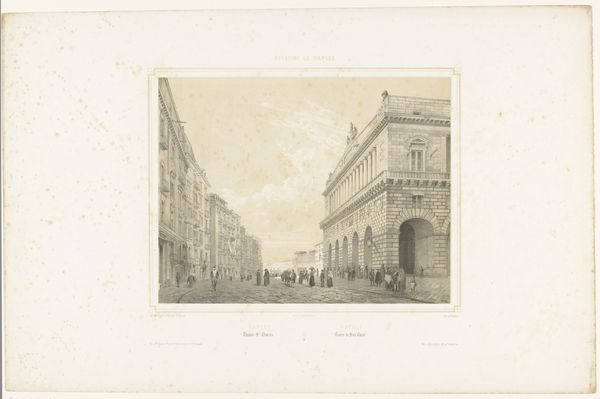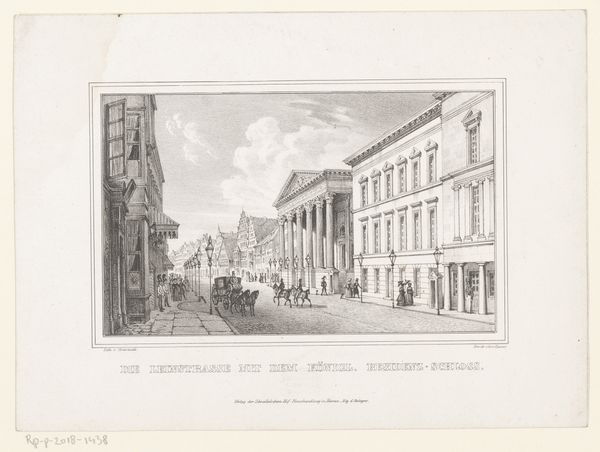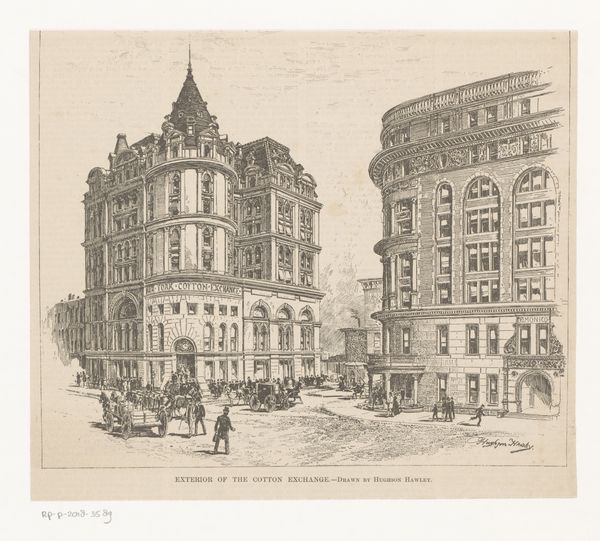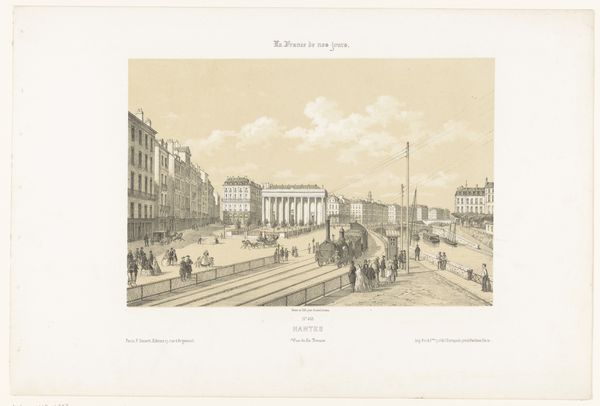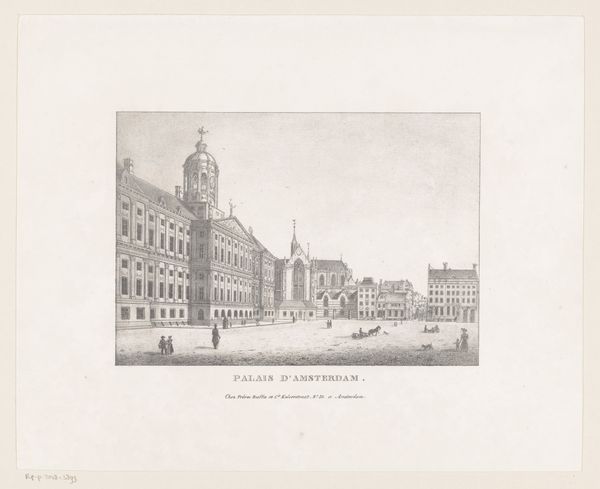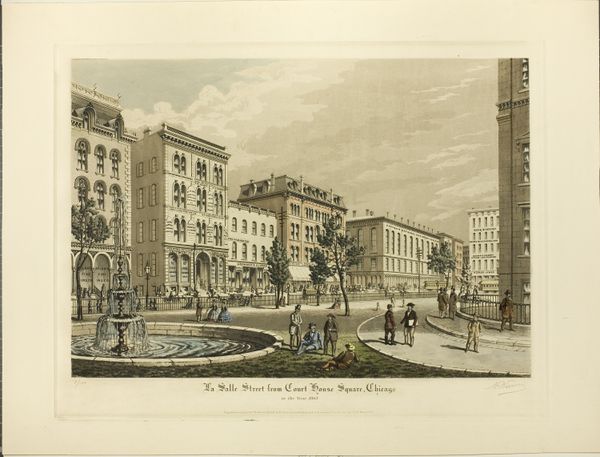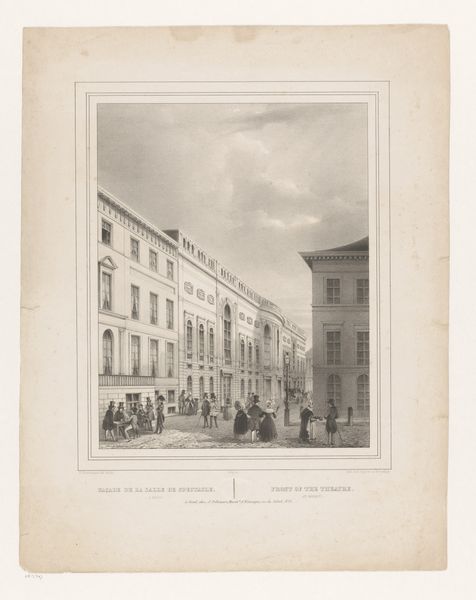
drawing, print, engraving
#
drawing
#
neoclacissism
# print
#
landscape
#
historical photography
#
19th century
#
cityscape
#
engraving
Dimensions: height 275 mm, width 375 mm
Copyright: Rijks Museum: Open Domain
Curator: This is Frederik Lodewijk Huygens' "Stadhuis in Rotterdam," an engraving dating from 1812 to 1887. It offers a glimpse into the city's past through the lens of neoclassicism. Editor: My first impression is one of formality, almost staged. The rigid lines of the buildings and the figures seem carefully placed, lacking spontaneity, as though they have been set to pose in the place for eternity. Curator: The very choice of engraving emphasizes a desire for precision, doesn't it? We see an embrace of rational ideals made manifest in the civic architecture and even the arrangement of figures, reinforcing its civic function. What social contexts may have made this appeal for order and reason popular in 19th-century Holland? Editor: Well, we have to remember that the image was consumed against a backdrop of significant industrial and urban growth, shaping public sentiment toward architectural representation. Notice, for example, how the building commands respect but does not particularly welcome or inspire. There is more visual weight afforded to civic administration, but perhaps less consideration given to everyday lived experience on that public thoroughfare. Curator: I see your point. Perhaps the production process further highlights that detachment. The engraving technique itself, with its controlled lines and emphasis on detail, necessitates a separation of the artist from the subject, mediating the lived environment through a manufactured process of artistic and mechanical translation. Editor: I am especially curious about how a city building gains relevance in an engraving like this one. After all, these buildings were potent political symbols that reflected the ruling authority. I see it not merely as an artistic endeavor but as a visual tool in the construction of Rotterdam's identity. How much does that role depend upon widespread accessibility of such engravings through distribution and circulation, perhaps? Curator: Precisely. Printmaking allowed for reproductions to enter a broader sphere, impacting notions of city pride and reinforcing values. Editor: So, next time you see it, consider not just what's shown, but who gets to see it and how it impacts their engagement. Curator: An approach I think deepens our understanding and reveals the complex relationship between art, production and public space.
Comments
No comments
Be the first to comment and join the conversation on the ultimate creative platform.
